List of monarchs of Württemberg
| Monarchy of Württemberg | |
|---|---|
State | |
 | |
 William II | |
| Details | |
| Style | His Majesty |
| First monarch | Conrad I (as Count) |
| Last monarch | William II (as King) |
| Formation | 1081 |
| Abolition | 30 November 1918 |
| Appointer | Hereditary |
| Pretender(s) | Wilhelm, Duke of Württemberg |

This is a list of monarchs of Württemberg, containing the Counts, Dukes, Electors, and Kings who reigned over different territories named Württemberg from the beginning of the County of Württemberg in the 11th century to the end of the Kingdom of Württemberg in 1918.
Counts and Dukes of Württemberg
[edit]Partitions of Württemberg under Württemberg rule
[edit]| County of Württemberg (1089-1442) | ||||||
| County of Stuttgart (1442–1482) | ||||||
| County of Montbéliard (Stuttgart line, 1st creation) (1473–1482) |
County of Urach (1442–1482) | |||||
| County of Montbéliard (1526-1593)[1] |
County of Württemberg (1482-1495) Raised to: Duchy of Württemberg (1495-1803)[2] (Urach line until 1495; Stuttgart line until 1498) (Montbéliard line until 1733) | |||||
| Duchy of Weitlingen (1588-1705) | ||||||
| County of Montbéliard (1617-1723) [3] |
Duchy of Neuenstadt (1st creation) (1617–1631) |
(Winnental line from 1733) |
Duchy of Oels (1635-1792) (Wilhelminort line from 1761) | |||
| Duchy of Neuenstadt (2nd creation) (1649-1742) |
||||||
| Duchy of Winnental (1677-1733) |
||||||
| Duchy of Wilhelminort (1704-1761) | ||||||
| Annexed to the Duchy of Brunswick-Lüneburg | ||||||
Table of monarchs
[edit]| Monarch | Born | Reign | Ruling part | Consort | Death | Notes | |
|---|---|---|---|---|---|---|---|
| Conrad I | c.1060? Son of ? of Beutelsbach |
1099 – 1122 | County of Württemberg | Werntrud no children |
1122 aged 61-62? |
Considered to be founder of the Württemberg dynasty. | |
| Conrad II | c.1080 Son of Liutgard of Beutelsbach |
1122 – 1143 | County of Württemberg | Hadelwig c.1095? at least two children |
1143 ged 62-63 |
His mother was a sister of Conrad I. He served as marshal of Swabia[4] and advocate of the town of Ulm, and had large possessions in the valleys of the Neckar and the Rems. Based on the similarity between their coats of arms, it is believed that Conrad II belonged to the family of the Counts of Veringen (Veringenstadt). | |
| Louis I | c.1098 Son of Conrad II and Hadelwig |
1143 – 1158 | County of Württemberg | Unknown at least one child |
1158 aged 59-60 |
He presumably was Vogt of the Denkendorf monastery. | |
| Louis II | c.1137 Son of Louis I |
1158 – 1181 | County of Württemberg | Willibirg of Kirchberg (1142-1179) 11633 Stuttgart two children |
1181 aged 43-44 |
||
| Hartmann | c.1160 First son of Louis II and Willibirg of Kirchberg |
1181 – 1240 | County of Württemberg | ? of Veringen no children |
1240 aged 79-80 |
Sons of Louis II, ruled jointly since 1194. Hartmann inherited Veringen estates through his marriage. Hartmann's children founded a branch of counts of Grüningen-Landau. | |
| Louis III | 1166 Second son of Louis II and Willibirg of Kirchberg |
1181 – 1241 | ? of Dillenburg/Kyburg 1184 four children |
1241 aged 74-75 | |||
| Ulrich I the Founder | 
|
1226 Son of Hermann of Württemberg and Irmgard of Ulten |
1241 – 25 February 1265 | County of Württemberg | Matilda of Baden 1251 three children Agnes of Legnica 1259 one child |
25 February 1265 |
Grandson of Hartmann I. |
| Ulrich II | 1254 Son of Ulrich I and Matilda of Baden |
25 February 1265 – 18 September 1279 | County of Württemberg | Unknown | 18 September 1279 aged 24-25 |
||
| Eberhard I the Illustrious | 
|
13 March 1265 Son of Ulrich I and Agnes of Legnica |
18 September 1279 – 5 June 1325 | County of Württemberg | Unknown two children Margaret of Lorraine c.1280? one child Irmengard of Baden 21 June 1296 three children |
5 June 1325 aged 60 |
|
| Ulrich III | 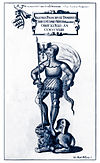
|
c.1290 Son of Eberhard I and Margaret of Lorraine |
5 June 1325 – 11 July 1344 | County of Württemberg | Sophia of Pfirt 1312 two children |
11 July 1344 Alsace aged 53-54 |
|
| Eberhard II the Jarrer | 
|
c.1315 First son of Ulrich III and Sophia of Pfirt |
11 July 1344 – 15 March 1392 | County of Württemberg | Elisabeth of Henneberg-Schleusingen 17 September 1342 two children |
15 March 1392 Stuttgart aged 76-77? |
Sons of Ulrich III, ruled jointly. Ulrich IV usually stood in the shadow of his elder brother Eberhard II. Because of that, he temporarily strove towards the division of the realm, which motivated Eberhard to force his brother to sign a treaty that stipulated the indivisibility of the county on December 3, 1361. On May 1, 1362, Ulrich IV relinquished his participation in the government. |
| Ulrich IV | 
|
c.1315 Second son of Ulrich III and Sophia of Pfirt |
11 July 1344 – 1 May 1362 | Katharina of Helfenstein c.1345 no children |
1366 Neuffen aged 50-51? | ||
| Eberhard III the Clement | 
|
1364 Stuttgart Son of Ulrich of Württemberg and Elisabeth of Bavaria |
15 March 1392 – 16 May 1417 | County of Württemberg | Antonia Visconti 27 October 1380 Urach three children Elisabeth of Nuremberg 22 November 1412 one child |
16 May 1417 Göppingen aged 52-53 |
Grandson of Eberhard II. His reign was noted by a peace-preserving policy of alliances with neighboring principalities and imperial towns. Examples are an alliances with 14 Upper-Swabian towns, concluded 27 August 1395 and the Marbachs alliance in 1405. Acquired the County of Montbéliard marrying his son to its heiress. |
| Eberhard IV the Younger | 
|
23 August 1388 Son of Eberhard III and Antonia Visconti |
16 May 1417 – 2 July 1419 | County of Württemberg | Henriette, Countess of Montbéliard 1407 three children |
2 July 1419 Waiblingen aged 30 |
Took part in government since 1407, and ruled in Montbéliard with his wife since 1409. |
| Regency of Henriette, Countess of Montbéliard (1419-1433) | Sons of Eberhard IV, co-ruled with their mother as regent until 1433. However, they agreed in dividing the county in 1442. Louis also inherited Montbéliard from his mother in 1444, and remodeled Urach into his residence and implemented an active policy to strengthen the monasteries in his realm of power. On his part, Ulrich inherited Stuttgart. | ||||||
| Louis I (IV)[5] | 
|
c.1412 First son of Eberhard IV and Henriette, Countess of Montbéliard |
2 July 1419 – 24 September 1450 | County of Urach (co-ruling in Württemberg until 1442; with County of Montbéliard since 1444) |
Mechthild of the Palatinate 21 October 1436 Stuttgart five children |
24 September 1450 Bad Urach aged 37-38 | |
| Ulrich V the Well-Loved | 
|
1413 Second son of Eberhard IV and Henriette, Countess of Montbéliard |
2 July 1419 – 1 September 1480 | County of Stuttgart (co-ruling in Württemberg until 1442) |
Margaret of Cleves 29 January 1441 Stuttgart one child Elisabeth of Bavaria-Landshut 8 February 1445 Stuttgart five children Margaret of Savoy 11 November 1453 Stuttgart three children |
1 September 1480 Leonberg aged 66-67 | |
| The Treaty of Nürtingen divided the County of Württemberg into two separate lines. Württemberg-Stuttgart, containing the northern and eastern parts of the old county, with the capital Stuttgart; and Württemberg-Urach, containing the southern and western parts, with the capital Urach. | |||||||
| Regency of Ulrich V, Count of Urach (1450-1453) | |||||||
| Louis II (V) | 3 April 1439 Waiblingen First son of Louis I (IV) and Mechthild of the Palatinate |
24 September 1450 – 3 November 1457 | County of Urach (with County of Montbéliard) |
Unmarried | 3 November 1457 Bad Urach aged 18 | ||
| Mechthild of the Palatinate | 
|
c.1412 Daughter of Louis III, Elector Palatine and Matilda of Savoy |
24 September 1450 – 22 August 1482 | County of Urach (at Rottenburg am Neckar) |
Louis I (IV) 21 October 1436 Stuttgart five children Albert VI, Archduke of Austria 1452 Vienna no children |
24 September 1450 Bad Urach aged 37-38 |
Widow of Louis I/IV, retained her widow's seat. |
| The Treaty of Münsingen reunited the two separate Lines under Eberhard V in 1482. Eberhard obtained the title of Duke in 1495. | |||||||
| Regency of Mechthild of the Palatinate (1457-1459) | Reunited the counties of Württemberg under his rule in 14 December 1482. His title was elevated to Duke in 1495. Founded the University of Tübingen, but expelled the Jews from his lands. He left no descendants, and the duchy passed to the deposed count of Stuttgart. | ||||||
| Eberhard V & I the Bearded[6] | 
|
11 December 1445 Second son of Louis I (IV) and Mechthild of the Palatinate |
3 November 1457 – 24 February 1496 | County of Württemberg (at Urach until 1482; County until 1495; with County of Montbéliard until 1473; ) Duchy of Württemberg (from 1495) |
Barbara Gonzaga 12 April/4 July 1474 Urach one child |
24 February 1496 Tübingen aged 50 | |
| Eberhard VI & II[6] | 
|
1 February 1447 Waiblingen First son of Ulrich V and Elisabeth of Bavaria-Landshut |
1 September 1480 – 14 December 1482 | County of Stuttgart | Elisabeth of Brandenburg April/May 1467 Stuttgart no children |
17 February 1504 Lindenfels aged 57 |
Children of Ulrich V. Henry received Montbéliard (and other Württemberg possessions on the left bank of the Rhine) from his cousin Eberhard V in 1473, following the Treaty of Urach. In the course of a dispute between Charles the Bold and Frederick III, Holy Roman Emperor, Henry became Charles' prisoner in 1474-1477.[7] By the 1482 Treaty of Reichenweier, Henry gave the county of Montbéliard to his brother. Eberhard VI, as the eldest son, succeded his father in 1480, also with his brother Henry (recently freed) as claimant. Eberhard VI was deposed by his namesake cousin, who reunited the county and raised it to duchy, but as Eberhard V didn't have children, Eberhard VI became again heir and then Duke of Wurttemberg. But he soon ran into trouble with the nobility, who disempowered him. He fled to Ulm, but as he didn't find support, he was forced to accept the Arbitration of Horb in 1498, which deposed and banished him, in exchange for an annual pension of 6,000 guilders. |
| 24 February 1496 – 10 June 1498 | Duchy of Württemberg | ||||||
| Henry | 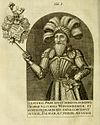
|
7 September 1448 Stuttgart Second son of Ulrich V and Elisabeth of Bavaria-Landshut |
1473 – 1482 | County of Montbéliard | Elisabeth of Palatinate-Zweibrücken-Bitsch (d. 17 February 1487) 10 January 1485 Reichenweier one child Eva of Salm-Badenweiler (1468-1521) 21 July 1488 Reichenweier two children |
15 April 1519 Hohenurach aged 70 | |
| Montbéliard was briefly annexed to Württemberg | |||||||
| Regency of the Estates of the realm (1498-1503) | Infamous for his violent tendencies, which caused marital problems, and which, at a greater extent, had him deposed in January 1519 and the duchy annexed to Austria. In exile, and away from his wife, who fled to Bavaria, he befriended Philip, landgrave of Hesse. Restored in May 1534, he aimed to bring the Reformation to the Duchy and, as Henry VIII of England was doing in his country, he also supported the Dissolution of the Monasteries. | ||||||
| Ulrich | 
|
8 February 1487 Riquewihr Son of Henry and Elisabeth of Palatinate-Zweibrücken-Bitsch |
10 June 1498 – 1519 1534 – 6 November 1550 |
Duchy of Württemberg (with County of Montbéliard 1498-1526 and 1534-1542) |
Sabina of Bavaria 2 March 1511 two children |
6 November 1550 Tübingen aged 63 | |
| Elisabeth of Brandenburg | 29 November 1451 Ansbach Daughter of Albrecht III Achilles, Elector of Brandenburg and Margaret of Baden |
10 June 1498 – 28 March 1524 | Duchy of Württemberg (at Nürtingen) |
Eberhard VI & II April/May 1467 Stuttgart no children |
28 March 1524 Nürtingen aged 57 |
She remained in the duchy after her husband's exile, at her "widow" seat. | |
| Württemberg annexed to Austria: 1519-1534 | |||||||
| George I the Cautious | 
|
4 February 1498 Bad Urach Son of Henry and Eva of Salm-Badenweiler |
2 September 1526 – 1534 1553 – 17 July 1558 |
County of Montbéliard | Barbara of Hesse 1555 three children |
17 July 1558 Kirkel aged 60 |
He was deposed by his half-brother Ulrich and was only restored to his title under his nephew Christoph. |
| Montbéliard was annexed to Württemberg in 1534, and revived in 1542 | |||||||
| Christopher the Pacific | 
|
12 May 1515 Bad Urach Son of Ulrich and Sabina of Bavaria |
6 November 1550 – 28 December 1568 | Duchy of Württemberg (in County of Montbéliard 1542-1550) |
Anna Maria of Brandenburg-Ansbach 24 February 1544 Ansbach twelve children |
28 December 1568 Stuttgart aged 53 |
He re-organized the entire administration of the church and state. He also reformed and supported the educational system. He also reconstructed the Altes Schloss in Stuttgart and hosted many celebrations. His mother, who had fled from his father, returned to her widow's seat in Nürtingen. |
| Sabina of Bavaria | 
|
24 April 1492 Munich Daughter of Albert IV, Duke of Bavaria and Kunigunde of Austria |
6 November 1550 – 30 August 1564 | Duchy of Württemberg (at Nürtingen) |
Ulrich 2 March 1511 two children |
30 August 1564 Nürtingen aged 72 | |
| Regency of Anna Maria of Brandenburg-Ansbach, George Frederick, Margrave of Brandenburg-Ansbach and Charles II, Margrave of Baden-Durlach (1568-77) and Wolfgang, Count Palatine of Zweibrücken (1568-69) | Left no descendants, and the duchy passed to his cousin Frederick I. His mother kept a seat at Nurtingen. | ||||||
| Louis the Pious[8] | 
|
1 January 1554 Stuttgart Son of Christopher and Anna Maria of Brandenburg-Ansbach |
28 December 1568 – 28 August 1593 | Duchy of Württemberg | Dorothea Ursula of Baden-Durlach 7 November 1575 no children Ursula of Palatinate-Veldenz 1585 no children |
28 August 1593 Stuttgart aged 38 | |
| Anna Maria of Brandenburg-Ansbach | 
|
28 December 1526 Jägerndorf Daughter of George, Margrave of Brandenburg-Ansbach and Hedwig of Münsterberg-Oels |
28 December 1568 – 20 May 1589 | Duchy of Württemberg (at Nürtingen) |
Christopher 24 February 1544 Ansbach twelve children |
20 May 1589 Nürtingen aged 63 | |
| Regency of Christopher, Duke of Württemberg (1558-1568), Philipp III, Count of Hanau-Münzenberg (1558-1561), Philip I, Landgrave of Hesse (1558-1567) and Wolfgang, Count Palatine of Zweibrücken (1558-1569) | Left no descendants, and the duchy passed to his brother Frederick I. | ||||||
| Frederick I | 
|
19 August 1557 Montbéliard Son of George I and Barbara of Hesse |
17 July 1558 – 28 August 1593 | County of Montbéliard | Sibylla of Anhalt 22 May 1581 Stuttgart fifteen children |
29 January 1608 Stuttgart aged 50 | |
| 28 August 1593 – 29 January 1608 | Duchy of Württemberg | ||||||
| Montbéliard merged into Württemberg in 1593 | |||||||
| Ursula of Palatinate-Veldenz | 
|
24 February 1572 Lauterecken Daughter of George John I, Count Palatine of Veldenz and Anna of Sweden |
29 January 1608 – 5 March 1635 | Duchy of Württemberg (at Nürtingen) |
Louis 1585 no children |
5 March 1635 Nürtingen aged 63 |
Children of Frederick I, divided their inheritance, which was officialized in 1617. John Frederick restored the constitution and councils abolished by his father. The stepmother, Ursula, as widow of Louis the Pious, had her widow's seat at Nürtingen. After Frederick Achilles' death without descendants, his duchy was briefly reannexed to the main Württemberg. |
| John Frederick | 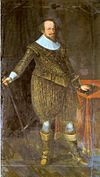
|
5 May 1582 Montbéliard First son of Frederick I and Sibylla of Anhalt |
29 January 1608 – 18 July 1628 | Duchy of Württemberg | Barbara Sophie of Brandenburg 5 November 1609 Urach nine children |
18 July 1628 en route to Heidenheim aged 46 | |
| Louis Frederick | 
|
29 January 1586 Montbéliard Third son of Frederick I and Sibylla of Anhalt |
29 January 1608 – 26 January 1631 | County of Montbéliard | Elisabeth Magdalena of Hesse-Darmstadt 14 July 1617 Stuttgart three children Anna Eleonora of Nassau-Saarbrücken 15 May 1625 three children |
26 January 1631 Montbéliard aged 44 | |
| Julius Frederick | 
|
3 June 1588 Montbéliard Fifth son of Frederick I and Sibylla of Anhalt |
29 January 1608 – 25 April 1635 | Duchy of Weiltingen | Anna Sabina of Schleswig-Holstein-Sonderburg 11 December 1618 Sønderborg nine children |
25 April 1635 Strasbourg aged 46 | |
| Frederick Achilles | 
|
5 May 1591 Montbéliard Seventh son of Frederick I and Sibylla of Anhalt |
29 January 1608 – 30 December 1631 | Duchy of Neuenstadt | Unmarried | 30 December 1631 Neuenstadt am Kocher aged 40 | |
| Neuenstadt merged in Württemberg | |||||||
| Regency of Louis Frederick, Duke of Württemberg-Montbéliard (1628-1631) Regency of Barbara Sophie of Brandenburg and Julius Frederick, Duke of Württemberg-Weiltingen (1631-1633) |
His reign was marked by the Thirty Years War. Following a major defeat of Württemberg troops in the battle of Nördlingen (1634), Württemberg was severely looted and plundered; Eberhard fled to Strasbourg, while many territories had already been passed on by the Emperor to other parties to push forward Catholicism in the region. The Duchy of Württemberg was reinstated after the Peace of Westphalia of 1648. Only then, Eberhard returned and could divide the duchy with his brothers, in the following year. | ||||||
| Eberhard III | 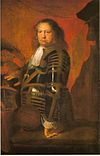
|
16 December 1614 Stuttgart Second son of John Frederick and Barbara Sophie of Brandenburg |
18 July 1628 – 6 September 1634 24 October 1648 – 2 July 1674 |
Duchy of Württemberg | Anna Catharina of Salm-Kyrburg 26 February 1637 fourteen children Maria Dorothea Sophie of Oettingen-Oettingen 20 July 1656 Ansbach eleven children |
2 July 1674 Stuttgart aged 59 | |
| Frederick | 
|
19 December 1615 Stuttgart Third son of John Frederick and Barbara Sophie of Brandenburg |
7 October 1649 – 24 March 1682 | Duchy of Neuenstadt | Clara Augusta of Brunswick-Wolfenbüttel 7 June 1653 twelve children |
24 March 1682 Neuenstadt am Kocher aged 66 | |
| Ulrich | 
|
15 May 1617 Stuttgart Fourth son of John Frederick and Barbara Sophie of Brandenburg |
7 October 1649 – 5 December 1671 | Duchy of Neuenbürg | Sophia Dorothea of Solms-Sonnenwalde 10 October 1647 Stuttgart one child Isabelle d'Arenberg (1623-17 August 1678) 15 May 1651 Brussels two children |
5 December 1671 Stuttgart aged 54 | |
| Neuenbürg rejoined Württemberg | |||||||
| Regency of George II, Landgrave of Hesse-Darmstadt and Julius Frederick, Duke of Württemberg-Weiltingen (1631-38) | Left no descendants. The duchy passed to his brother George. | ||||||
| Leopold Frederick | 30 May 1624 Montbéliard Son of Louis Frederick and Elisabeth Magdalena of Hesse-Darmstadt |
26 January 1631 – 15 June 1662 | County of Montbéliard | Sibylle of Württemberg (4 December 1620 - 21 May 1707) no children |
15 June 1662 Montbéliard aged 38 | ||
| Roderick | 19 October 1618 Stuttgart First son of Julius Frederick and Anna Sabina of Schleswig-Holstein-Sonderburg |
25 April 1635 – 19 November 1651 | Duchy of Weiltingen | Unmarried | 19 November 1651 Weiltingen aged 33 |
Children of Julius Frederick. Roderick died without descendants and was succeeded by a younger brother, Manfred. Silvius, a middle child, inherited by marriage another duchy for the family, in Silesian land. | |
| Silvius I Nimrod | 
|
2 May 1622 Weiltingen Second son of Julius Frederick and Anna Sabina of Schleswig-Holstein-Sonderburg |
1 May 1647 – 24 April 1664 | Duchy of Oels | Elisabeth Marie, Duchess of Oels 1 May 1647 Oleśnica seven children |
24 April 1664 Brzezinka aged 41 | |
| Manfred | 5 June 1626 Brenz an der Brenz Third son of Julius Frederick and Anna Sabina of Schleswig-Holstein-Sonderburg |
19 November 1651 – 15 May 1662 | Duchy of Weiltingen | Juliana of Oldenburg-Delemnhorst 31 October 1652 Wolfenbüttel three children |
15 May 1662 Weiltingen aged 35 | ||
| George II | 
|
5 October 1626 Montbéliard Son of Louis Frederick and Anna Eleonora of Nassau-Saarbrücken |
15 June 1662 – 1676 1684 – 1 June 1699 |
County of Montbéliard | Anne de Coligny (1624-1680) 9 March 1648 Montbéliard eight children |
1 June 1699 Montbéliard aged 72 |
Under his rule the French occupied his lands. In 1684, refused an oppurtunity to return to the duchy, and it was then administered by Duke Frederick Charles of Winnental until his own death. Only then George returned, but died a year later. |
| Regency of Frederick Charles, Duke of Württemberg-Winnental (1684-1697) | |||||||
| Montbéliard occupied by France (1676-1684) | |||||||
| Regency of Juliana of Oldenburg-Delemnhorst (1662-1679) | Left no surviving male descendants, and the duchy was reannexed to the main duchy of Württemberg | ||||||
| Frederick Ferdinand | 6 October 1654 Weiltingen Son of Manfred and Juliana of Oldenburg-Delemnhorst |
15 May 1662 – 8 August 1705 | Duchy of Weiltingen | Elisabeth of Württemberg-Montbéliard 9 September 1689 Oleśnica three children |
8 August 1705 Weiltingen aged 50 | ||
| Weitlingen was annexed to Württemberg | |||||||
| Regency of Elisabeth Marie, Duchess of Oels (1664-1672) | Divided their inheritance. Silvius died without children, and Christian Ulrich of Bernstadt took his place; Bernstadt passed to the Juliusburg ruler, who moved to Bernstadt. | ||||||
| Silvius II Frederick | 
|
21 February 1651 Oleśnica Second son of Silvius I Nimrod and Elisabeth Marie, Duchess of Oels |
26 April 1664 – 3 June 1697 | Duchy of Oels (in Oels proper) |
Eleonore Charlotte of Württemberg-Montbéliard 7 April 1672 Oleśnica no children |
3 June 1697 Oleśnica aged 46 | |
| Christian Ulrich I | 
|
9 April 1652 Oleśnica Third son of Silvius I Nimrod and Elisabeth Marie, Duchess of Oels |
26 April 1664 – 5 April 1704 | Duchy of Oels (at Bernstadt until 1697; in Oels proper since 1697) |
Anna Elisabeth of Anhalt-Bernburg 13 March 1672 Bernburg seven children Sibylla Maria of Saxe-Merseburg 27 October 1683 Doberlug-Kirchhain seven children Sophie Wilhelmine of East Frisia 4 February 1695 Hamburg one child Sophie of Mecklenburg-Güstrow 6 December 1700 Güstrow no children |
5 April 1704 Oleśnica aged 51 | |
| Julius Siegmund | 18 August 1653 Oleśnica Fourth son of Silvius I Nimrod and Elisabeth Marie, Duchess of Oels |
26 April 1664 – 15 October 1684 | Duchy of Oels (at Juliusburg) |
Anna Sophia of Mecklenburg-Schwerin 4 April 1677 Grabow three children |
15 October 1684 Dobroszyce aged 31 | ||
| William Louis | 
|
7 January 1647 Stuttgart Fifth son of Eberhard III and Anna Catharina of Salm-Kyrburg |
2 July 1674 – 23 June 1677 | Duchy of Württemberg | Magdalena Sibylla of Hesse-Darmstadt 6 November 1673 Darmstadt four children |
23 June 1677 Hirsau aged 30 |
Children of Eberhard III, divided their inheritance. |
| Frederick Charles | 
|
12 September 1652 Stuttgart Seventh son of Eberhard III and Anna Catharina of Salm-Kyrburg |
2 July 1674 – 20 September 1697 | Duchy of Winnental | Eleonore Juliane of Brandenburg-Ansbach 31 October 1682 Ansbach seven children |
20 September 1697 Stuttgart aged 45 | |
| Regency of Magdalena Sibylla of Hesse-Darmstadt and Frederick Charles, Duke of Württemberg-Winnental (1677-1693) | For his time, Eberhard Louis was a very tolerant ruler, commonly noted by modern scholars as "enlightened." Left no surviving descendants, and thus the main line went extinct. The duchy passed to Winnental branch. | ||||||
| Eberhard Louis | 
|
18 September 1676 Stuttgart Son of William Louis and Magdalena Sibylla of Hesse-Darmstadt |
23 June 1677 – 31 October 1733 | Duchy of Württemberg | Johanna Elisabeth of Baden-Durlach 6 May 1697 Basel one child |
31 October 1733 Ludwigsburg aged 57 | |
| Frederick Augustus | 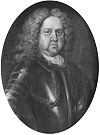
|
12 March 1654 Neuenstadt am Kocher Son of Frederick and Clara Augusta of Brunswick-Wolfenbüttel |
24 March 1682 – 6 August 1716 | Duchy of Neuenstadt | Albertine Sophie Esther of Eberstein 9 February 1679 fifteen children |
6 August 1716 Kraichtal aged 62 |
Left no male surviving descendants. The duchy passed to his brother. |
| Regency of Anna Sophia of Mecklenburg-Schwerin (1684-1704) | As he left no descendants, Bernstadt rejoined Oels. | ||||||
| Charles, Duke of Württemberg-Bernstadt | 
|
11 March 1682 Dobroszyce Son of Julius Siegmund and Anna Sophia of Mecklenburg-Schwerin |
15 October 1684 – 8 February 1745 | Duchy of Oels (at Juliusburg until 1697; at Bernstadt from 1697) |
Wilhelmine Louise of Saxe-Meiningen 20 September 1703 Meiningen no children |
8 February 1745 Bierutów aged 62 | |
| Juliusburg annexed to Bernstadt (1697); Bernstadt annexed to Oels (1745) | |||||||
| Charles Alexander | 
|
24 January 1684 Stuttgart Son of Frederick Charles and Eleonore Juliane of Brandenburg-Ansbach |
20 December 1697 – 31 October 1733 | Duchy of Winnental | Marie Auguste of Thurn and Taxis 1 May 1727 Frankfurt am Main six children |
12 March 1737 Ludwigsburg aged 53 |
Previously served as Habsburg regent of the Kingdom of Serbia (1720–33). In 1733, inherited the main Duchy of Württemberg. |
| 31 October 1733 – 12 March 1737 | Duchy of Württemberg | ||||||
| Winnental merged into Württemberg | |||||||
| Leopold Eberhard | 21 May 1670 Montbéliard Son of George II and Anne de Coligny |
1 June 1699 – 25 May 1723 | County of Montbéliard | Anne-Sabine Hedwiger June 1695 (morganatic) four children Elisabeth Charlotte Curie 1718 Montbéliard (morganatic) six children |
25 March 1723 Montbéliard aged 52 |
Had no legitimate descendants, and after his death the county was definitely annexed to Württemberg. | |
| Montbéliard was annexed to Württemberg in 1723 | |||||||
| Charles Frederick II[9] | 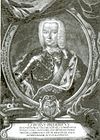
|
7 February 1690 Merseburg Second son of Christian Ulrich I and Sibylla Maria of Saxe-Merseburg |
5 April 1704 – 1744 | Duchy of Oels | Sibylle Charlotte Juliane of Württemberg-Weiltingen 21 April 1709 Stuttgart no children |
14 December 1761 Oleśnica aged 71 |
Children of Christian Ulrich I, divided their inehritance. Charles Frederick, childless, abdicated to his nephew, Charles Christian Erdmann. |
| Christian Ulrich II | 
|
27 January 1691 Zbytowa Third son of Christian Ulrich I and Sibylla Maria of Saxe-Merseburg |
5 April 1704 – 7 February 1734 | Duchy of Wilhelminort | Philippine Charlotte of Roedern-Krappitz (18 February 1691 - 17 June 1758) 13 July 1711 six children |
7 February 1734 Stuttgart aged 43 | |
| Charles Rudolph | 
|
29 May 1667 Neuenstadt am Kocher Son of Frederick Augustus and Albertine Sophie Esther of Eberstein |
6 August 1716 – 17 November 1742 | Duchy of Neuenstadt | Unmarried | 17 November 1742 Neuenstadt am Kocher aged 75 |
Left no male surviving descendants. The duchy was annexed into Württemberg. |
| Neuenstadt was annexed to Württemberg in 1742 | |||||||
| Regency of Charles Rudolph, Duke of Württemberg-Neuenstadt (1737-1738) Regency of Charles Frederick II, Duke of Württemberg-Oels (1738-1746) |
Left no children. The duchy passed to his brother. | ||||||
| Charles Eugene | 
|
11 February 1728 Brussels First son of Charles Alexander and Marie Auguste of Thurn and Taxis |
12 March 1737 – 24 October 1793 | Duchy of Württemberg | Elisabeth Friederike Sophie of Brandenburg-Bayreuth 26 September 1748 Bayreuth one child Countess Franziska von Hohenheim 10/11 January 1785 (morganatic until 1790) no children |
24 October 1793 Hohenheim aged 65 | |
| Charles Christian Erdmann | 
|
26 October 1716 Brzozowiec Son of Christian Ulrich II and Philippine Charlotte of Roedern-Krappitz |
7 February 1734 – 1744 | Duchy of Wilhelminort | Marie Sophie Wilhelmine of Solms-Laubach (1721-1793) 8 April 1741 Laubach three children |
14 December 1792 Oleśnica aged 76 |
Left no male descendants. His duchy was inherited by his already widowed son-in-law, from the House of Welf. |
| 1744 – 14 December 1792 | Duchy of Oels | ||||||
| Oels was annexed to the Duchy of Brunswick-Lüneburg | |||||||
| Louis Eugene | 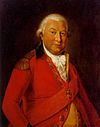
|
6 January 1731 Frankfurt am Main Second son of Charles Alexander and Marie Auguste of Thurn and Taxis |
24 October 1793 – 20 May 1795 | Duchy of Württemberg | Countess Sophia Albertine of Beichlingen (15 December 1728-10 May 1807) 10/11 January 1785 (morganatic) three children |
20 May 1795 Ludwigsburg aged 64 |
He had only married morganatically, and as so his children couldn't succeed him; the duchy went to his brother. |
| Frederick II Eugene | 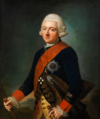
|
21 January 1732 Stuttgart Third son of Charles Alexander and Marie Auguste of Thurn and Taxis |
20 May 1795 – 23 December 1797 | Duchy of Württemberg | Friederike of Brandenburg-Schwedt 29 November 1753 twelve children |
23 December 1797 Hohenheim aged 65 |
|
| Frederick III | 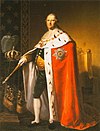
|
6 November 1754 Trzebiatów Son of Frederick II Eugene and Friederike of Brandenburg-Schwedt |
23 December 1797 – 25 February 1803 | Duchy of Württemberg | Augusta of Brunswick-Wolfenbüttel 15 October 1780 Brunswick four children Charlotte of Great Britain 18 May 1797 London no children |
30 October 1816 Stuttgart aged 61 |
In 1803, he was raised as Elector of the Holy Roman Empire, and in 1806 raised himself as king, with approval of Napoleon Bonaparte. |
Elector of Württemberg, 1803–1806
[edit]In 1803, the Duke of Württemberg was raised to the rank of Elector of the Holy Roman Empire. In 1806, the Empire was dissolved, and the Elector of Württemberg became an independent monarch with the title of King.
| Elector of Württemberg | ||||
|---|---|---|---|---|
| Württemberg Dynasty | ||||
| Image | Name (Birth–Death) |
Began | Ended | Notes |

|
Frederick I Friedrich I (1754–1816) |
25 February 1803 | 6 August 1806 | The first and only Elector of Württemberg. |
Kings of Württemberg, 1806–1918
[edit]The Holy Roman Empire came to an end in 1806. The Elector of Württemberg, allied to Napoleon, anticipated its dissolution by becoming the ruler of an independent Kingdom of Württemberg in 1806.
| Kings of Württemberg | ||||
|---|---|---|---|---|
| Württemberg Dynasty | ||||
| Image | Name (Birth–Death) |
Began | Ended | Notes |

|
Frederick I Friedrich I (1754–1816) |
1 January 1806 | 30 October 1816 | |

|
William I Wilhelm I (1781–1864) |
30 October 1816 | 25 June 1864 | Son of Frederick I. |

|
Charles I Karl I (1823–1891) |
25 June 1864 | 6 October 1891 | Son of William I. Became a subordinate ruler in the German Empire after the Unification of Germany in 1871. |

|
William II Wilhelm II (1848–1921) |
6 October 1891 | 30 November 1918 | Nephew of Charles I. The last King of Württemberg. Abdicated in the German Revolution of 1918–1919. |
Because of a lack of male heirs under Salic law, on the death of Wilhelm II in 1921 the royal house had to reach back to the descendants of Friedrich II Eugen (ruled 1795–97). The line of the Duke of Urach was excluded because of a morganatic marriage back in 1800 by its forebear Duke William, and so the succession devolved to the younger branch of Altshausen.
Another morganatic descendant of Friedrich II Eugen was Mary of Teck (1867–1953), who married the British king George V when he was Duke of York.
See also
[edit]- List of Württembergish royal consorts
- List of presidents of Württemberg
- House of Württemberg
- History of Baden-Württemberg
- Coat of arms of Württemberg
References
[edit]- ^ Revived in 1526-34 (2nd creation), 1542-50 (3rd creation) and 1553-93 (4th creation)
- ^ Annexed to Austria in 1519-34
- ^ Annexed to France in 1676-1684
- ^ This fact is from coins produced under his premiership - details are available here
- ^ Probably styled I in reference to the numbering in the county of Montbéliard; there was only one Louis, who ruled in the 11th century and to whom no numbering is usually attributed. Louis should be numbered IV in Württemberg.
- ^ a b When raised as dukes, the counting of the rulers restarted.
- ^ During captivity, Henry was treated very badly, allegedly including a mock execution.
- ^ Some authors inexplicably give him the number III, which would only be applicable if numberings of counts were valid for the dukes, which doesn't seem to be the case, as seen with the dukes named Eberhard.
- ^ Numbered II as Duke of Oels; Charles Frederick I (of Podebrady) was the father-in-law of Silvius I Nimrod.
